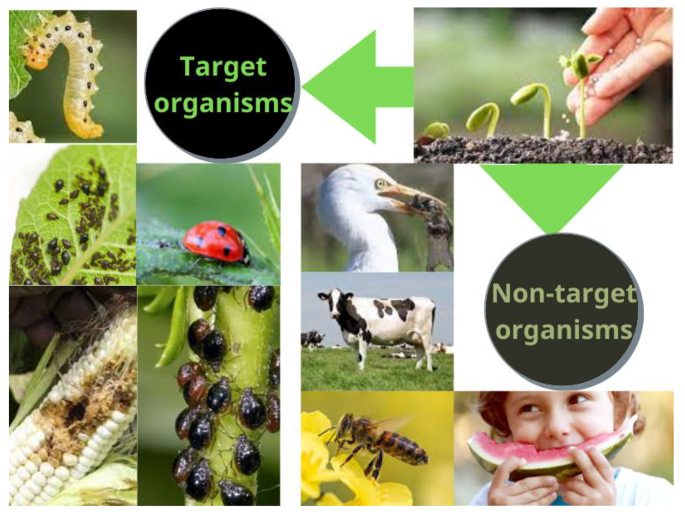Little Known Facts About Eco Bed Bug Exterminators Dc.
Little Known Facts About Eco Bed Bug Exterminators Dc.
Blog Article
The 9-Second Trick For Eco Bed Bug Exterminators Dc
Table of ContentsEco Bed Bug Exterminators Dc - QuestionsNot known Incorrect Statements About Eco Bed Bug Exterminators Dc Everything about Eco Bed Bug Exterminators Dc10 Simple Techniques For Eco Bed Bug Exterminators DcExamine This Report on Eco Bed Bug Exterminators Dc
Due to the fact that pesticides are hazardous, they are likewise possibly harmful to humans, animals, other microorganisms, and the setting. Consequently, individuals that use chemicals or consistently come in contact with them should recognize the relative poisoning, prospective health and wellness results, and preventative actions to minimize direct exposure to the items they use. Threat, or danger, of utilizing pesticides is the capacity for injury, or the level of risk involved in utilizing a chemical under a given collection of conditions.
Nonetheless, applicators can decrease or virtually eliminate direct exposure-- and therefore lower risk-- by complying with the label guidelines, utilizing personal protective clothing and devices (PPE), and dealing with the pesticide effectively. For instance, greater than 95 percent of all chemical exposures originate from facial direct exposure, mainly to the hands and lower arms. By using a pair of unlined, chemical-resistant handwear covers, this kind of direct exposure can be almost removed.
The harmful impacts that occur from a solitary direct exposure by any kind of path of entrance are called "intense results." The four courses of direct exposure are facial (skin), breathing (lungs), dental (mouth), and the eyes. Severe poisoning is identified by taking a look at the dermal poisoning, inhalation toxicity, and oral poisoning of guinea pig.
A Biased View of Eco Bed Bug Exterminators Dc
Acute poisoning is gauged as the quantity or focus of a toxicant-- the a.i.-- called for to eliminate half of the pets in an examination population. This step is normally expressed as the LD50 (deadly dose 50) or the LC50 (deadly focus 50). In addition, the LD50 and LC50 values are based upon a solitary dosage and are taped in milligrams of pesticide per kilo of body weight (mg/kg) of the test animal or partly per million (ppm).
The reduced the LD50 or LC50 value of a pesticide item, the higher its poisoning to humans and animals. Chemicals with a high LD50 are the least harmful to humans if used according to the directions on the item label. The persistent poisoning of a pesticide is figured out by subjecting test pets to long-lasting exposure to the active ingredient.
The persistent poisoning of a pesticide is more hard than intense toxicity to determine with laboratory analysis. Products are classified on the basis of their relative acute poisoning (their LD50 or LC50 worths). Pesticides that are categorized as extremely poisonous (Toxicity Category I) on the basis of either dental, facial, or breathing poisoning need to have the signal words risk and poisonous substance published in red with a head and crossbones symbol prominently showed on the front panel of the bundle label.
The acute (solitary dosage) dental LD50 for pesticide items in this team varies from a trace quantity to 50 mg/kg. For instance, exposure of a few decreases of a product taken by mouth could be fatal to a 150-pound individual. Some chemical items have just the signal word risk, which tells you absolutely nothing regarding the acute toxicity, simply that the item can trigger serious eye damage or severe skin irritability
An Unbiased View of Eco Bed Bug Exterminators Dc
In this category, the intense dental LD50 varieties from 50 to 500 mg/kg. A tsp to an ounce of this material can be deadly to a 150-pound individual (how to get rid of bed bugs). Chemical items classified as either a little harmful or fairly nontoxic (Poisoning Categories III and IV) are called for to have the signal word care on the chemical label

All pesticide toxicity values, worths the Consisting of, can be found on the product's Material Safety Product Security InformationMSDS). Chemical labels and MSDS can be gotten from merchants or produces - https://packersmovers.activeboard.com/t67151553/how-to-connect-canon-mg3620-printer-to-computer/?ts=1710874767&direction=prev&page=last#lastPostAnchor. The signs of pesticide poisoning can vary from a mild skin inflammation to coma or even fatality.
Individuals likewise differ in their sensitivity to different levels of these chemicals. Some individuals might reveal no reaction to a direct exposure that may create serious health problem in others (bed bug heat treatment). Due to potential wellness worries, chemical customers and handlers have to identify the typical symptoms and signs of chemical poisoning. The results, or signs and symptoms, of chemical poisoning can be extensively specified as either topical or systemic.
Eco Bed Bug Exterminators Dc - The Facts
Dermatitis, or inflammation of the skin, is accepted as one of the most commonly reported topical impact connected with pesticide direct exposure. Signs of dermatitis range from reddening of the skin to breakouts and/or sores. Some people often tend to cough, wheeze, or sneeze when exposed to chemical sprays. Some people respond to the strong odor and annoying impacts of petroleum distillates used as carriers in chemical items.
This symptom generally subsides within a few mins after an individual is removed from the direct exposure to the irritant. A response to a chemical item that creates a person not just to sneeze and cough however also to develop severe acute breathing symptoms is extra most likely to be a true hypersensitivity or allergic response.
Systemic results are rather different from topical effects. They frequently take place away from the initial factor of contact as an outcome of the chemical being taken in into and dispersed throughout the body. Systemic impacts usually consist of queasiness, throwing up, tiredness, migraine, and digestive tract disorders. In sophisticated poisoning check that situations, the individual might experience changes in heart rate, difficulty breathing, convulsions, and coma, which might result in fatality.
Report this page